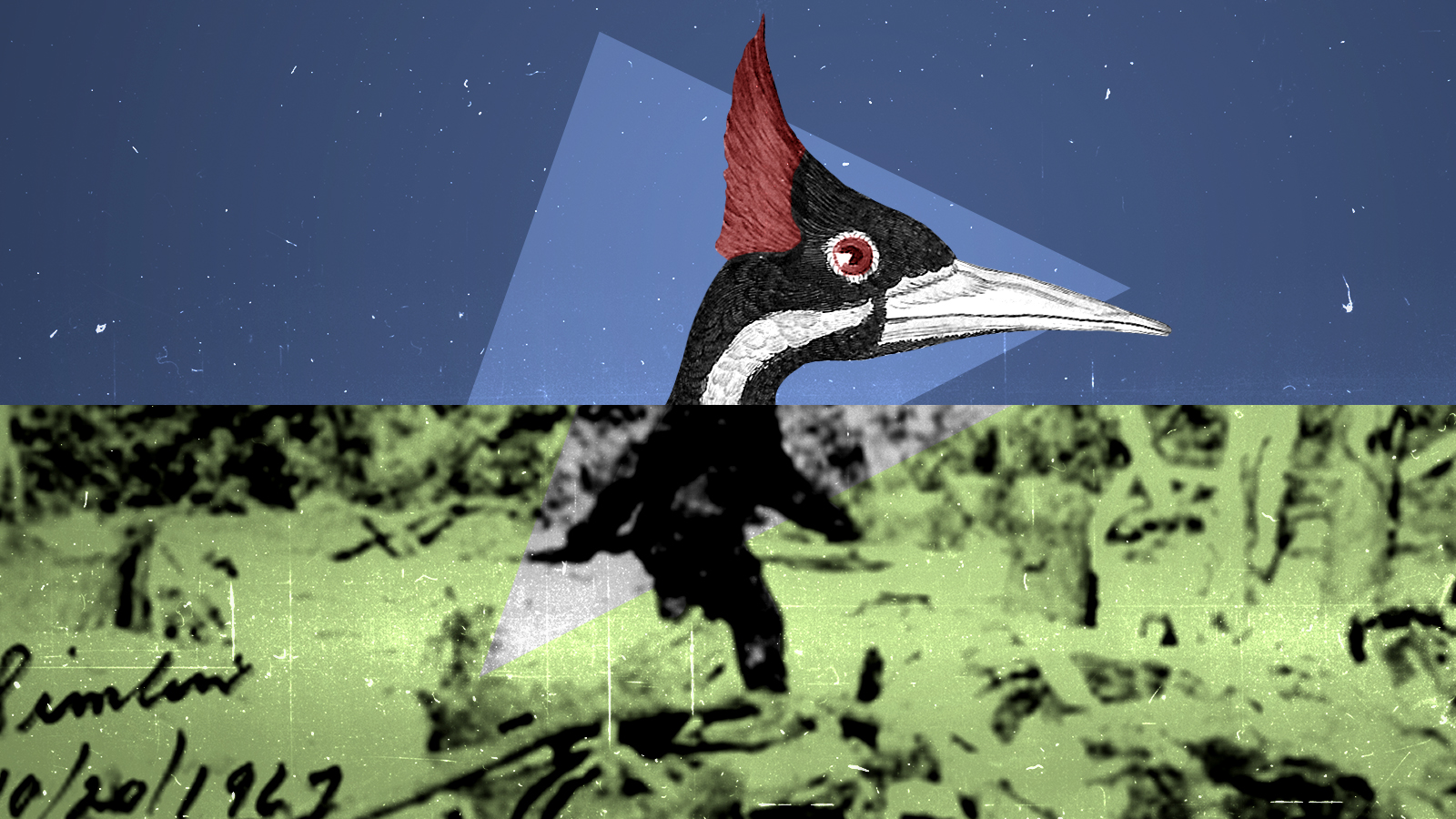The Lord God Bird and a growing class of cryptids
On holding out hope on the precipice of mass extinction


What do Sasquatch, the Jersey Devil, and the ivory-billed woodpecker all have in common? None of them officially exist.
Of course, what sets the ivory-billed woodpecker apart from, say, the Yeti and the Loch Ness Monster is the fact that we know it at least used to exist. But with the U.S. Fish and Wildlife Service's announcement late last month that it plans to rule the woodpecker extinct, we're watching in real time as an animal passes from credible to dubious existence. Where, then, does that leave those who still believe the truth is out there?
Last confirmed alive in 1944, intermittant reports of sightings of the ivory-billed woodpecker (known also as "the Lord God Bird," because "when it swooped into view, people were known to shout, 'Lord God, what a bird!'") have surfaced for years. The most famous recent claim is a 2004 sighting by Tim Gallagher and Bobby Harrison. Then, a Cornell Laboratory of Ornithology expedition made more than a dozen sightings and captured inconclusive, but promising, footage of a possible specimen the following year.
The Week
Escape your echo chamber. Get the facts behind the news, plus analysis from multiple perspectives.

Sign up for The Week's Free Newsletters
From our morning news briefing to a weekly Good News Newsletter, get the best of The Week delivered directly to your inbox.
From our morning news briefing to a weekly Good News Newsletter, get the best of The Week delivered directly to your inbox.
Like a blurry photo of a Big Foot, these sightings are subject to plenty of doubts and debate. "We're not questioning what those people thought they saw, but we can't know what they actually saw without some kind of proof," one skeptic delicately told "Living on Earth" in 2005, pointing out that the pileated woodpecker, a common sight in the American southeast, looks similar enough that it could be easily mistaken for its more elusive cousin.
Gallagher, though, is a firm "believer," so the official extinction label is "a bitter pill to swallow," he wrote for Audubon this week. "Despite all the challenges and the strong opinions of doubters," he added, "a handful of us are still working hard to amass proof, searching tirelessly on our own dime, not supported by institutions, government funding, or various conservation organizations" — a statement that could easily be transposed to the mouth of a UFOlogist or cryptozoologist.
I make the comparison not to cheapen Gallagher's plea for "a little extra time" before ruling the ivory-billed woodpecker extinct. The opposite, in fact: The Lord God Bird was merely the highest-profile of 23 total species of plants and animals Fish and Wildlife is poised to label extinct. Some 467 species were declared extinct in the decade ending in 2019, with 1 million more estimated to be at immediate risk, Vox notes. Man-made climate change places us on the precipice of a mass extinction event in our and our children's lifetime. The question of holding out hope is going to become more and more pressing in the coming years; we're all going to have to make decisions like Gallagher's.
Ever more animals like the ivory-billed woodpecker will become cryptids, a word defined by the Oxford English Dictionary as "an animal whose existence or survival to the present day is disputed or unsubstantiated." Though it's more often used to describe creatures whose existence has never been proven, like Mothman, it's also used to refer to what The New York Times calls "enigmatic creatures" that people have "an emotional investment in identifying," like the technically extinct, but still obsessively searched-for, Tasmanian tiger.
A free daily email with the biggest news stories of the day – and the best features from TheWeek.com
Does that mean we should dismiss people like Gallagher as quacks for holding out hope against the odds — against even an official classification by the U.S. government? Not at all. Who wants to be a cynical Dana Scully when you could be Fox Mulder, living in a world where, just maybe, the ivory-billed woodpecker still takes wing?
Jeva Lange was the executive editor at TheWeek.com. She formerly served as The Week's deputy editor and culture critic. She is also a contributor to Screen Slate, and her writing has appeared in The New York Daily News, The Awl, Vice, and Gothamist, among other publications. Jeva lives in New York City. Follow her on Twitter.
-
 The curious history of hanging coffins
The curious history of hanging coffinsUnder The Radar Ancient societies in southern China pegged coffins into high cliffsides in burial ritual linked to good fortune
-
 The Trump administration says it deports dangerous criminals. ICE data tells a different story.
The Trump administration says it deports dangerous criminals. ICE data tells a different story.IN THE SPOTLIGHT Arrest data points to an inconvenient truth for the White House’s ongoing deportation agenda
-
 Ex-FBI agents sue Patel over protest firing
Ex-FBI agents sue Patel over protest firingspeed read The former FBI agents were fired for kneeling during a 2020 racial justice protest for ‘apolitical tactical reasons’
